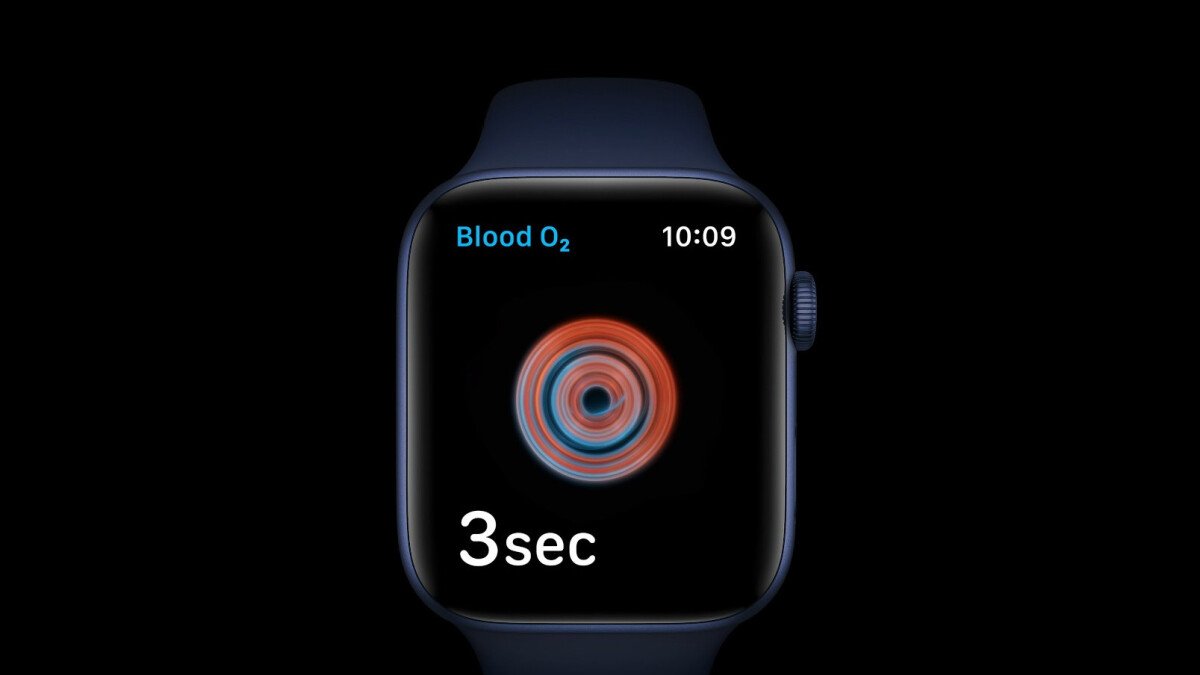Did you know that your Apple Watch can help you gain insights into your overall wellness by measuring your blood oxygen levels on-demand? This valuable information can give you an idea of how efficiently your blood carries oxygen from your lungs to the rest of your body, which is crucial for maintaining good health.
However, it is important to note that measurements taken with the Apple Watch Blood Oxygen app are designed for general fitness and wellness purposes and not intended for medical use.

Why are blood oxygen levels important? Blood oxygen levels indicate the percentage of oxygen your red blood cells transport throughout your body. Most people have a blood oxygen level between 95 – 100%, but some individuals can live a healthy life with levels slightly below 95%. It’s normal to experience lower values while sleeping or for some users to occasionally see values below 95%.
Setting up the Blood Oxygen app
To use the Blood Oxygen app, you’ll need an Apple Watch Series 6, Series 7, Series 8, or Ultra updated to the latest version of watchOS*. The app is only available in certain countries and regions, and for users who are at least 18 years old. You’ll also need an iPhone 6s or later with the latest iOS version.
To set up the app, open the Health app on your iPhone and follow the onscreen steps. Once completed, you can open the Blood Oxygen app on your Apple Watch to measure your oxygen levels.

How to measure your blood oxygen levels
- Ensure your Apple Watch is snug but comfortable on your wrist.
- Open the Blood Oxygen app on your Apple Watch.
- Stay still and ensure your wrist is flat with the watch facing up.
- Tap “Start” and keep your arm steady for 15 seconds.
- After 15 seconds, you’ll receive the results.
Tips for accurate measurements
- Rest your arms on a table or your lap while measuring.
- Ensure your Apple Watch is snug and in contact with your wrist.
- Position your watch 1-2 inches away from your wrist bone if it interferes with the measurements.
Factors that may affect readings Certain factors may impact the accuracy of blood oxygen measurements, such as skin perfusion, tattoos, and motion. For example, cold temperatures can reduce skin perfusion, making it difficult for the app to measure blood oxygen levels. Some tattoos can also block light from the sensor, causing inaccurate readings. Lastly, specific postures or high heart rates (above 150 bpm) while at rest can result in unsuccessful measurements.
Background measurements and viewing your health information The Apple Watch Blood Oxygen app will periodically measure your blood oxygen levels when background measurements are enabled. These measurements, along with on-demand readings, are saved in the Health app on your iPhone. You can filter and view measurements taken during sleep or in high-elevation environments.
Stay on top of your fitness journey by measuring your blood oxygen levels using the Apple Watch Blood Oxygen app, and make informed decisions for a healthier lifestyle.